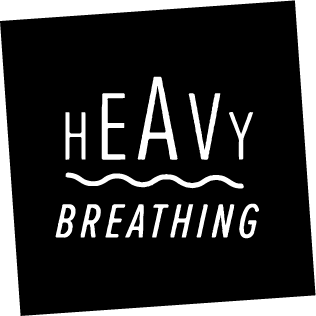HB/AV AUDIO TRACK
January 6, 2019
Layton Lachman + Samuel Hertz: The more a path is used, the more a path is used
Heavy Breathing A/V presents The more a path is used, the more a path is used. Layton Lachman and Samuel Hertz draw from their long-standing artistic collaboration--as well as Lachman’s practice of Open Source Forms--in order to offer a guided movement experience. This workshop gives a taste of an Open Source Forms class, which is usually facilitated in a group setting, and is set to a soundscape composed by Hertz.
Open Source Forms, developed by Stephanie Skura, is deeply rooted in & fluidly expanded from Skinner Releasing Technique, utilizing images and hands on exercises to instigate a letting go into new modes of moving. The work is based in improvisation and a journeying together through different energetic states, with the desire to access different awarenesses in ourselves. We will traverse personally and collectively, sometimes diving headlong into a concept, while other times listening and looking at it obliquely. As well as moving, we will spend time writing and reflecting on our experiences.
Some things to note:
The session is experiential, meaning that whatever sensation, imagination, feeling, emotion...whatever comes up during the next hour is a valid experience! There is no one way in which to experience this session. It need not look a certain way.
Make sure that you have some space to move around. Also make sure that you feel comfortable in whatever space you are in (a closed door in often helpful) because we might find ourselves in some states of consciousness that are deep and possibly vulnerable.
This session is best listened to through a sound system to prevent obstructions to movement, however, is it also possible to listen to it on headphones.
Let things take as long as they need. Your timing might be different than the pace that we suggest, however, feel free to let your own interest and internal timing guide how long you stay in something. You can always pause if you need more time.
At the end of the session I will say, “now we can move into writing.” It’s nice to have your notebook and pen ready. This writing period is to digest our experience. It can be written in stream of consciousness, it can be a drawing, or any kind of marks on the page that help us process our experience. Give 5-10 minutes to this processes of reflection.
Additional Reading & Listening:
https://soundcloud.com/endoftheworldshow/sister-interview-on-pleasure-activism
https://web.archive.org/web/20181021195049/http://www.generativesomatics.org/content/theory-what-politicized-somatics
(using the WayBack Machine for https://generativesomatics.org/ which is located in Oakland)
Pauline Oliveros. "Auralizing in the Sonosphere: A Vocabulary for Inner Sound and Sounding" in Journal of Visual Culture 10(2). 2011. pp. 162-168.
Sara Ahmed. "What's the Use." Duke University Press. 2019
BIOS
Samuel Hertz is a Berlin-based sound artist and researcher working at intersections of Earth-based sound, sonic sensualities, and climate change. Alongside his performances exists a strong research component based in Anthropocene studies, encompassing relationships between sound, geography, climate, and social ecologies working with institutions such as HKW/Max Planck Institute (DE), RHUL Centre for GeoHumanities (UK), and the University of Leeds (UK).
After working in the San Francisco Bay Area for seven years, Layton Lachman is now emerging as a Berlin-based artist. They are working in dance performance and continue to be deeply invested in the politics of alternative modes of artistic collaboration, curation, and social organizing. Their research is often in the realm of somatics and finding methods of utilizing these experiential practices in the creation of immersive worlds of sensorial complexity and perceptual disorientation.
